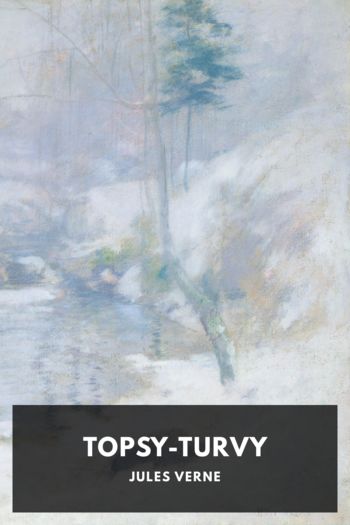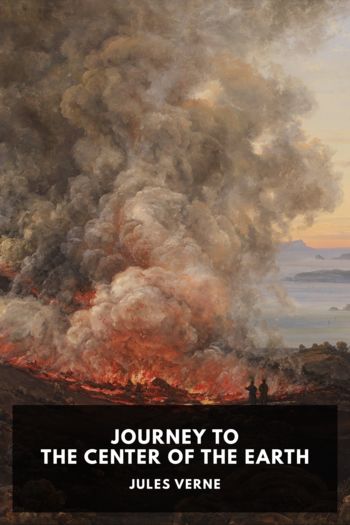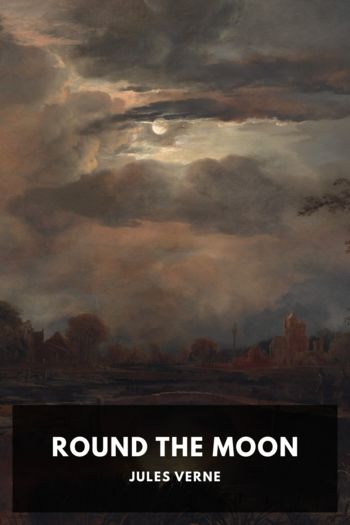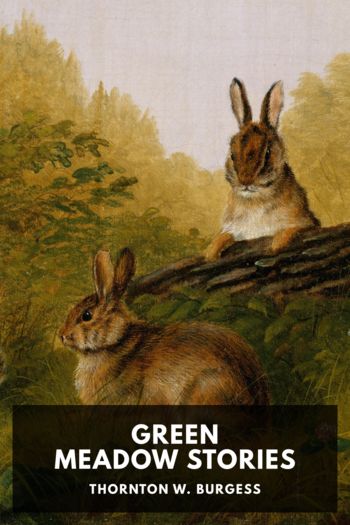Topsy-Turvy by Jules Verne (best book recommendations .txt) 📕

- Author: Jules Verne
Book online «Topsy-Turvy by Jules Verne (best book recommendations .txt) 📕». Author Jules Verne
This Sultan rightly ranked as one of the most remarkable rulers of those people of Central Africa who try to escape the influence, or more correctly the domination of England. At this capital of Kisongo, President Barbicane and Capt. Nicholl accompanied by six men who were devoted to them, arrived in the first week of January of the current year. On leaving the United States, whence their departure was only known to Mrs. Evangelina Scorbitt, and J. T. Maston, they had embarked in New York for the Cape of Good Hope, whence a vessel transported them to Zanzibar, on the island of the same name. There a bark secretly chartered by the Sultan brought them to the port of Mombas, on the African border on the other side of the channel. An escort sent by the Sultan waited for them at this port, and after a hard voyage nearly a hundred leagues across this terrible region, obstructed by forests, deep marshes, etc., they arrived at the royal residence. After knowing the calculations of J. T. Maston, President Barbicane had already put himself in communication with Bali-Bali through the help of a Swedish explorer, who had passed several years in this part of Africa. As the Sultan had become one of their most ardent admirers since their trip to the moon, a trip whose reputation had gone as far as these countries, he had a great friendship for these courageous Yankees. Without telling him for what purpose it was, Impey Barbicane had easily obtained permission from the Sultan to undertake important works at the southern foot of Kilimanjaro. In return for a large sum, estimated at $300,000, Bali-Bali had bound himself to furnish them all the workmen necessary. In other words, the captain and his friends were authorized to do at Kilimanjaro whatever they liked to do. They could dispose of the large chain of mountains according to their desires; they could tear them down if they liked, or they could take them away if they would be able to do so. In consequence of these arrangements, which the Sultan had made at his own figure, the North Polar Practical Association was as much proprietor of this country as they already were to the polar region. The reception which President Barbicane and Capt. Nicholl received at Kisongo was very cordial. Bali-Bali displayed an admiration amounting to adoration for these celebrated travellers who had made this dangerous voyage to reach the country around the North Pole.
He had in short an extraordinary sympathy for the creators of these mysterious operations which were going to be accomplished in his kingdom. He also promised them absolute secrecy on his part as well as on the part of his people, whose cooperation was assured to them. Not a single Negro who worked at their shop would be allowed to leave them for a single day under pain of the most severe punishment. This is how this operation was veiled in mystery so that the most active and sharpest agents of America and Europe failed to penetrate it. If it was finally discovered it must have been that the Sultan modified his severe rules after the accomplishment of the works and that there were traitors and babblers even amongst the Negroes. In this way Richard W. Trust, consul at Zanzibar, had received wind of what was going on at Kilimanjaro. But then at that date, the 13th of September, it was too late to stop President Barbicane in the accomplishment of his design.
And now, why had Barbicane & Co. chosen the Wamasai for the theatre of their operations? First, because the country suited them in regard to its geographical situation, as it was in a very little known part of Africa, and as it was very far from the territory usually visited by travellers. Then, the mass of Kilimanjaro offered them all the qualities of solidity and material necessary for their work. And, moreover, on the surface of this country were found the raw materials which they needed in a condition very easy to handle. A few months before leaving the United States President Barbicane had learnt from the Swedish explorer that at the foot of Kilimanjaro iron and coal were plentiful on the ground. No mines to dig into, no fields to explore a thousand feet deep in the earth’s shell. Iron and coal were so plentiful even for this great undertaking that they only had to stoop down to pick it up. In other words, there existed in the neighborhood of this mountain enormous fields of nitrate of soda and of iron pyrites, which were necessary for the manufacture of melimelonite. President Barbicane and Capt. Nicholl had taken with them only ten people, of whom they were absolutely sure, and no one else. These ten men had to supervise the 10,000 Negroes put at their disposal by Bali-Bali, and to them was given the task of manufacturing the monster cannon and its not less monster projectile. Two weeks after the arrival of President Barbicane and his associate at Wamasai three large workshops were established at the southern foot of Kilimanjaro, one for the cannon foundry, the second for the manufacture of the projectile, and the third for the manufacture of the melimelonite.
Now, first of all, how had Barbicane & Co. met the problem of manufacturing a cannon of such colossal dimensions? We will see and understand at the same time that the difficulty of creating such a device was not easily comprehensible by the inhabitants of the world. In reality the making of a cannon a million times larger than that of twenty-seven centimetres was a superhuman work. Already great difficulties had been met in the manufacture of pieces of forty-two centimetres diameter, which would throw projectiles of 780 kilos with 274 kilograms of powder. Barbicane & Co. did not think of these difficulties. It was not a cannon, not even a mortar, which they intended to make, but simply a





Comments (0)